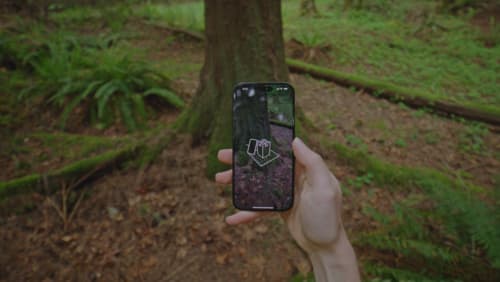How can I import large data sets
Asked on 2024-08-04
1 search
To import large data sets, especially in the context of 3D assets and spatial computing, you can follow these steps based on the sessions from WWDC:
-
Choose the Right Format:
- USD (Universal Scene Description): This is a versatile format supported by many applications like Blender, Autodesk Maya, SideFX Houdini, and more. USD comes in different types:
- USDA: ASCII format, good for collaborative work.
- USDC: Binary format, efficient for storing large amounts of data.
- USDZ: Zip format, useful for AR assets as it packages all dependencies like textures into a single file.
- USD (Universal Scene Description): This is a versatile format supported by many applications like Blender, Autodesk Maya, SideFX Houdini, and more. USD comes in different types:
-
Exporting from DCC Tools:
- Use tools like Blender, Maya, or Houdini to create and export your 3D assets. For example, in Blender, you can export your scene as a USD file by going to the file menu and selecting the export option for USD.
-
Optimizing Your Assets:
- Polygon Count: Keep the polygon count within recommended limits (e.g., no more than 500,000 triangles for an immersive scene).
- Textures: Use efficient texture management techniques, such as baking lighting and using procedural maps.
-
Loading Data Efficiently:
- Use APIs for loading photogrammetry samples, which can handle large data sets by filling in all available data properties from images, including depth data and gravity.
For more detailed steps and examples, you can refer to the following sessions:
- Optimize your 3D assets for spatial computing (02:21)
- Create custom environments for your immersive apps in visionOS (06:19)
- Discover area mode for Object Capture (07:34)
These sessions provide comprehensive guidelines on exporting, optimizing, and managing large data sets for 3D assets in various applications.

Explore object tracking for visionOS
Find out how you can use object tracking to turn real-world objects into virtual anchors in your visionOS app. Learn how you can build spatial experiences with object tracking from start to finish. Find out how to create a reference object using machine learning in Create ML and attach content relative to your target object in Reality Composer Pro, RealityKit or ARKit APIs.

Discover area mode for Object Capture
Discover how area mode for Object Capture enables new 3D capture possibilities on iOS by extending the functionality of Object Capture to support capture and reconstruction of an area. Learn how to optimize the quality of iOS captures using the new macOS sample app for reconstruction, and find out how to view the final results with Quick Look on Apple Vision Pro, iPhone, iPad or Mac. Learn about improvements to 3D reconstruction, including a new API that allows you to create your own custom image processing pipelines.

Optimize your 3D assets for spatial computing
Dive into an end-to-end workflow for optimized 3D asset creation. Discover best practices for optimizing meshes, materials, and textures in your digital content creation tool. Learn how to harness shader graph, baking, and material instances to enhance your 3D scene while optimizing performance. Take advantage of native tools to work more effectively with your assets and improve your app’s performance.
